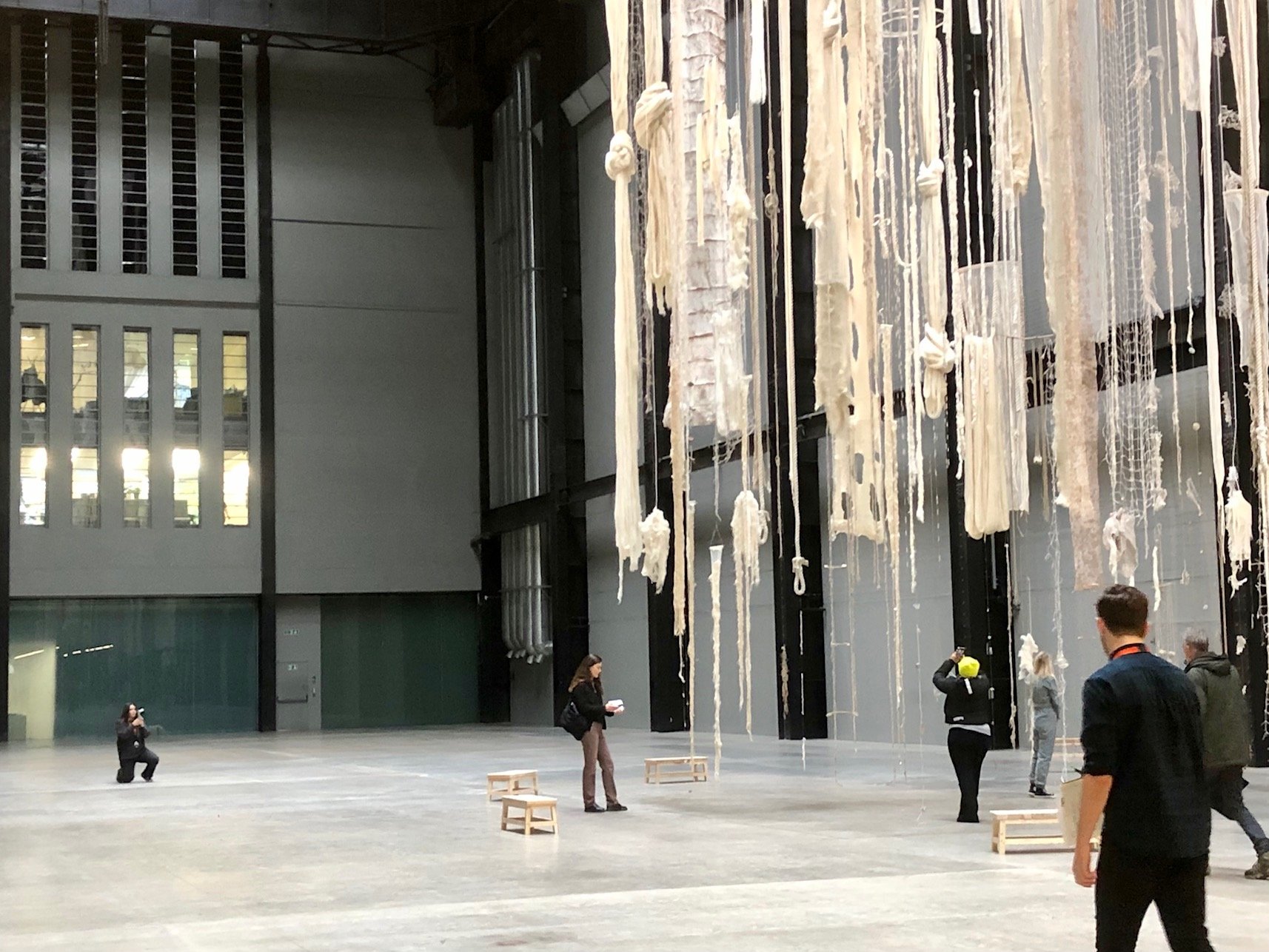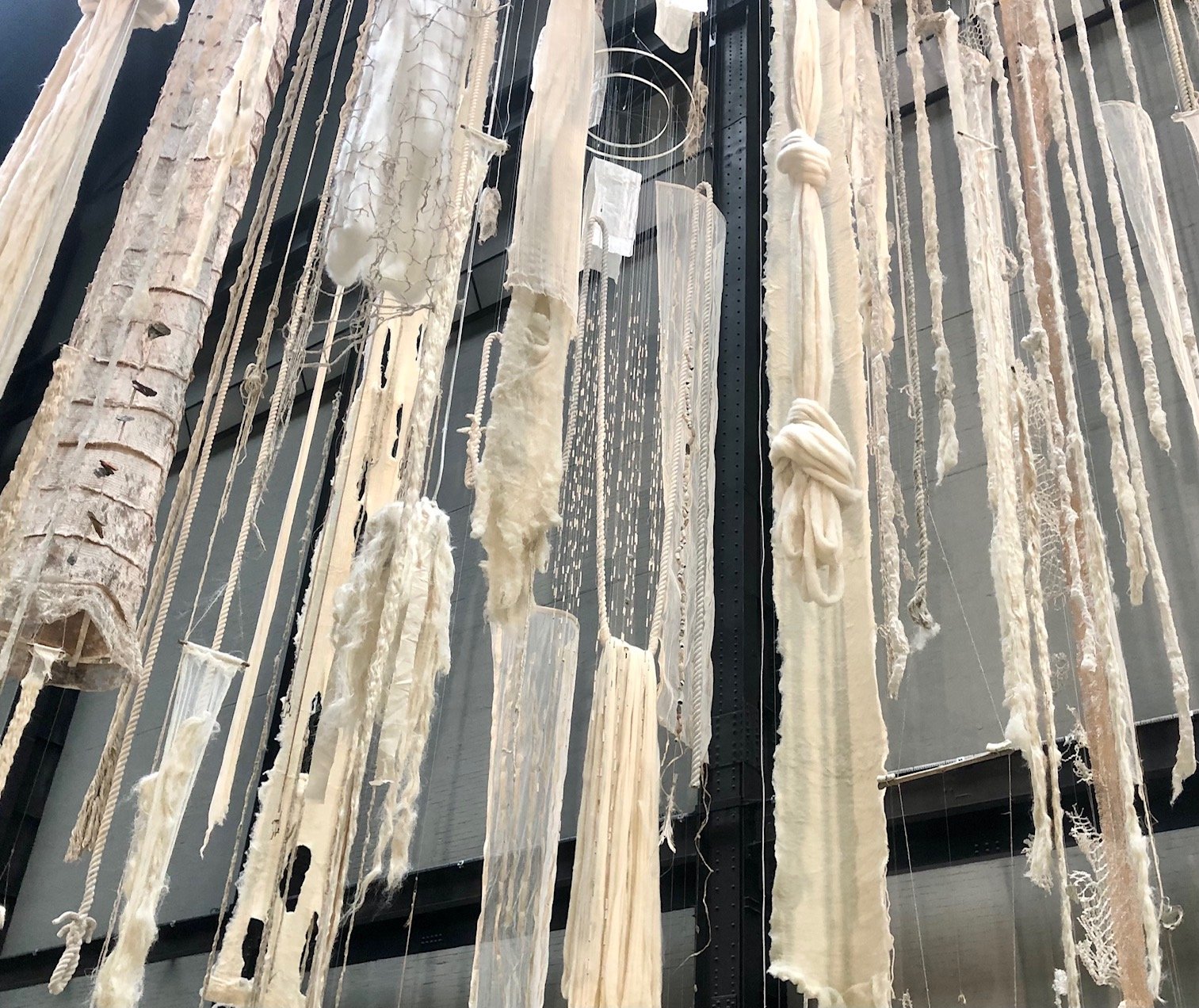Cecilia Vicuña’s Brain Forest Quipu at Tate Modern
Tate Modern’s Turbine Hall is an intimidating space to fill, yet the newest installation by Cecilia Vicuña, Brain Forest Quipu, has an immensely powerful presence. Two quipus – an Andean tradition of communication that dates back thousands of years – dominate each end of the space, accompanied by music from Indigenous communities, sounds from nature, and digital messages from activists shown on screens and online. The installation showcases Vicuña’s wide-ranging artistic talents as well as her unique, and incredibly moving, approach to preserving Indigenous culture, and the forests of South America.
Photo courtesy of Isobel Knight
Cecilia Vicuña’s life is fascinating: born in Santiago, Chile in 1948, she has created poems, sculptures, paintings, and films since the 1960s that explore Indigenous traditions, and work to raise awareness of the destruction of forests, and the disastrous consequences this will have for the future. Her work serves as a link between Andean culture and the West; she worked in London during her time at the Slade School of Fine Art and lived in the city in exile after the military coup against former Chilean President Salvador Allende. The materials used to make the quipus – wool, rope, cardboard, and other discarded objects – were collected by local Latin American women from the banks of the Thames, crafting a tangible sense of community.
Quipus are not just sculptures: Vicuña says, ‘In the Andes, people did not write, they wove meaning into textiles and knotted cords’. Various combinations of knots, structures, and colours were able to depict meaning as effectively as an alphabet – calling into question the narrow Western definition of language. During the Spanish Conquest of Chile, quipus were burnt in favour of European forms of communication, yet they remained important throughout Andean culture. True to this legacy, the quipus at Tate Modern express an urgent message. The bone-white colour represents forests destroyed through drought and man-made fires, creating a chilling depiction of the imminent threat the world’s most vital ecosystems are under.
Photo courtesy of Isobel Knight
Brain Forest Quipu is the seventh Hyundai Commission at Tate Modern, and it is impossible to avoid the irony in this. Vital work like Vicuña’s, that aim to educate people on pressing issues such as the climate crisis, are often only economically feasible due to partnerships with enormous corporations such as Hyundai Motors. It is a complex dilemma; the exhibitions are free, which allows the general public an insight into many different cultures and ways of life, yet at the same time, it is laughable that an exhibition about climate change is financed by one of the most environmentally harmful industries. Yet, sponsorships are often just a means to an end; hopefully the educational impact of Vicuña’s work is more powerful than any corporate endorsement.
The passion Vicuña has for her work and the message it expresses, is abundantly clear. Her admiration for traditional Andean culture, and the collective effort that went into this multi-media installation, creates a true sense of warmth in such a cold, sparse space. Forest preservation is something that can feel like a distant issue in Western metropolises such as London, and exhibitions such as Brain Forest Quipu are urgently needed to remind us of the danger we are all in if action is not taken.
Brain Forest Quipu is on display at Tate Modern until 16th April 2023


